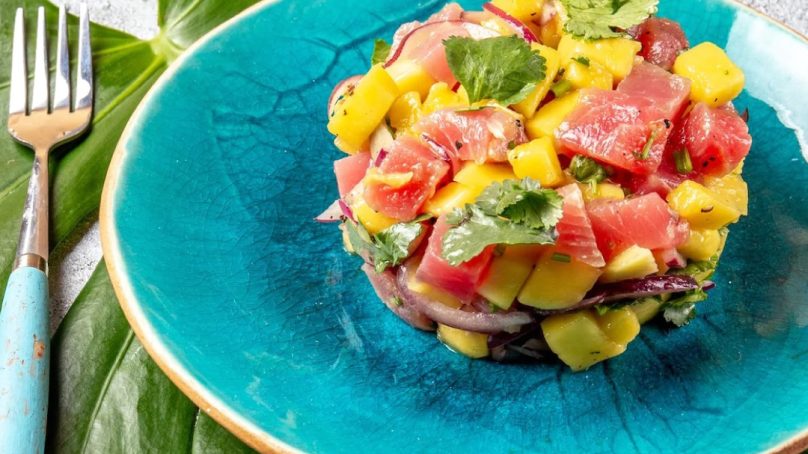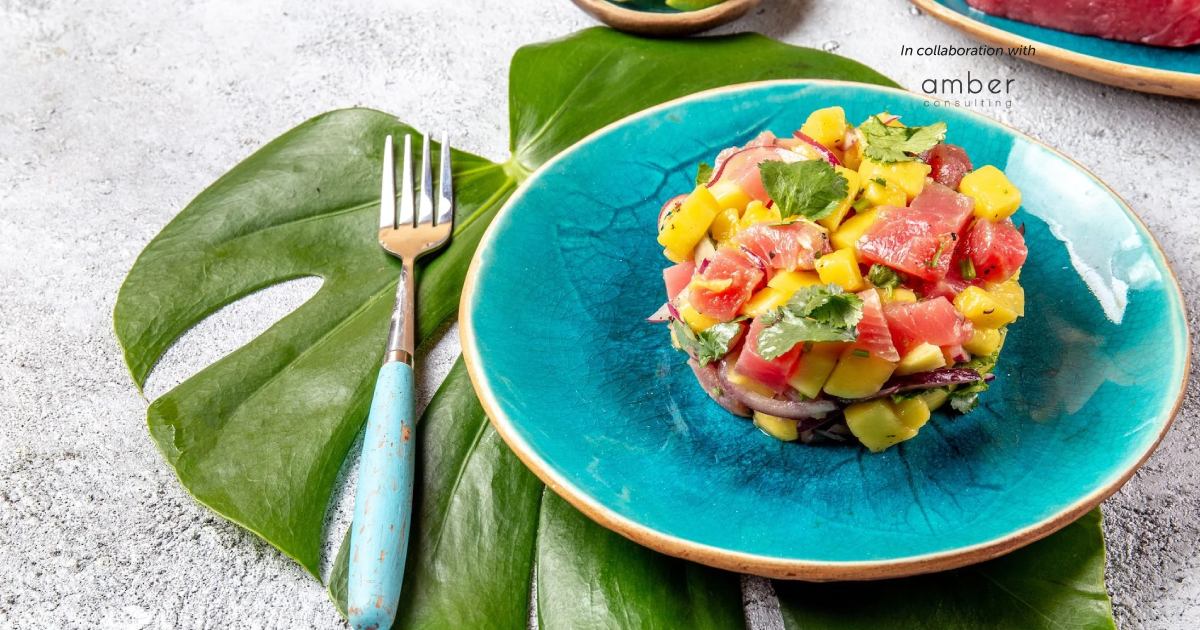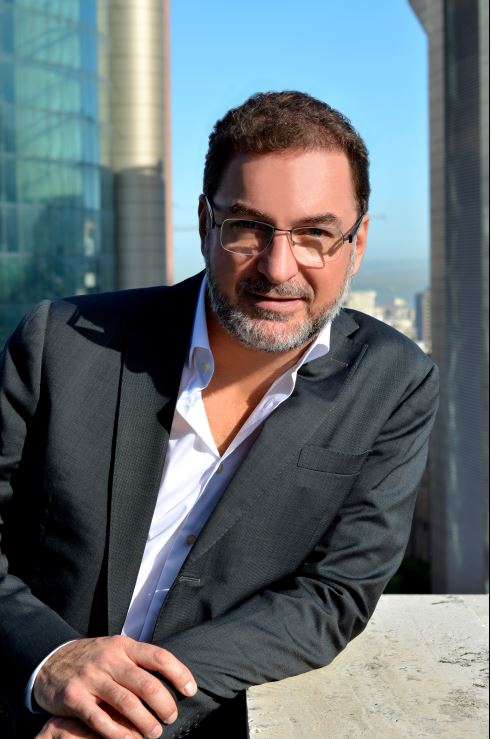

It is about time we recognized the presence of Nikkei cuisine at an international level.
While the word “Nikkei” is universally accepted as a reference to Japanese immigrants and their descendants around the world, Nikkei food, on the other hand, has different connotations depending on how it is defined and by whom. What everyone can agree on is that Nikkei cuisine has managed to weave its way into the international culinary scene in the last decade or so and has already started growing roots in the Middle East.
Origins of Nikkei cuisine
Nikkei cuisine is broadly defined as Japanese-Peruvian fusion, combining Japanese techniques with Peruvian ingredients. A closer look at history reveals that this synthesis was not just a hazardous moment of innovation but rather a distinct culture that was developed over generations.
In 2019, a group of researchers said that some Peruvian gastro-elites, such as prominent chefs and culinary specialists, consider Nikkei cuisine a primarily Peruvian invention. In contrast, others believe that the Japanese workers who were offered jobs by the Peruvian government at the turn of the 20th century were the founders of the cuisine, one that was developed out of necessity when they lacked the Japanese ingredients to cook their traditional dishes.
Regardless of its origins, Nikkei cuisine’s popularization is largely attributed to two Japanese chefs: Nobu Matsuhisa, the man behind the series of Nikkei-Inspired NOBU hotels and restaurants; and Toshiro Konishi, who is said to have contributed to the interest in fusion sushi by his appearances on television.
Famous dishes and key ingredients
Ceviche — raw fish marinated in lime, spices and tiger’s milk — is said to be synonymous with Nikkei cuisine. Tiradito, a dish comprising thinly sliced raw fish with Peruvian peppers and lime juice, was invented by chef Matsuhisa and has also become a well-known Nikkei item. Other signature dishes include: carpassion (salmon carpaccio typically infused with passion-fruit syrup, watercress and crispy strips; Inca nigiri (cured tuna, yellow chilli, crispy quinoa and chalaquita — a sauce made of onions and chillies); pulpo al olivo (thinly sliced octopus with a purple olive sauce); leche de tigre (tiger’s milk — consumed as a beverage or with ceviche — essentially containing fish, citrus fruits and seasoning); acevichado (a type of maki and sauce); and Nikkei tuna tataki. Key Japanese ingredients include shoyu, miso, hondashi or wasabi, while Peruvian components vary from Peruvian seafood and potatoes to aji (Peruvian peppers).
Nikkei and Nikkei-inspired restaurants in the MENA region
Nikkei-inspired restaurants, such as NOBU and Zuma, can be found all over the world, including the Middle East.
The UAE
Japanese food has long existed in Dubai. Today, a long list of restaurants honoring Japanese and Peruvian cuisine can be found, such as Amelia, Inti, NOBU, Kayto, Clay, Moana Seafood Restaurant, Nazcaa, Goldfish Sushi & Yakitori and Onze. Pure Peruvian restaurants, like COYA and INKA, can also be added to the list of Nikkeiinspired restaurants. The same can be said for SUSHISAMBA, which serves Peruvian- Brazilian-Japanese cuisine, MAMA ZONIA (Asian-Caribbean-Latin American cuisine), Amazonico (Japanese-Latin American cuisine), BB Social Dining (modern Eastern cuisine), Clap, Mimi Kakushi and Reif Kushiyaki.
In Abu Dhabi, Niri’s menu revolves around Japanese cuisine and its spirit, while Buddha Bar Beach serves a special Nikkei brunch.
KSA
KOI was the first Nikkei restaurant to open in Riyadh. The city is also home to a number of Nikkei-inspired spots, such as MYAZU (Japanese cuisine) and COYA (Peruvian). The most sought-after Nikkei restaurants in Jeddah are Kuuru, which launched in March 2021, and The Lucky Llama, which joined the scene in 2022 and is set to open a new branch in Riyadh by the end of 2023.
Egypt
Izakaya was the first authentic Nikkei restaurant to launch in Cairo in 2015. Kazoku and Sachi are Japanese restaurants with a contemporary twist.
Qatar
COYA and Zuma have been catering to the Doha market for some time now. Nozomi, on the other hand, is a Nikkei-inspired spot that was voted the city’s “Best Japanese Restaurant 2022.” Interestingly, many Nikkei and Nikkeiinpsired restaurants were ranked among MENA’S 50 Best Restaurants in 2022: Zuma (#2), Sachi (#5), COYA Dubai (#13) and Abu Dhabi (#34), MYAZU (#15), Reif Kushiyaki (#16), Mimi Kakushi (#20), Amazonico (#29), BB Social Dining (#33), Izakaya (#45) and Clap (#47).
Nikkei cuisine in the MENA region: success factors
The rise of Japan as a global economic power and the popularization of Japanese food in general have supported the spread of Nikkei cuisine in the Middle East. Chef Hervey Courtot, who works at NOBU Riyadh, stated that there were no Japanese restaurants in the kingdom 20 years ago, but things have changed immensely in the last decade. The presence of Japanese restaurants in the MENA region has laid the ground for an inspired variation, since the Nikkei kitchen is partly Japanese at its core. As a result, many restaurateurs and entrepreneurs are jumping at the opportunity to enter the Nikkei market, even if it’s with only a few dishes on the menu.
Other success factors are not strikingly different from the ones that made Nikkei cuisine internationally famous. In fact, it is Peru’s gastro-politics that has led the Nikkei to claim and promote Nikkei cuisine as their own. The aforementioned study, regarding the link between Nikkei cuisine and the presence of Japanese immigrants in Peru, suggests that Nikkei cuisine has found a place in Peruvian gastronomy, creating a sense of pride and belonging for many of these Japanese-Peruvians.
While Middle Eastern destinations like Dubai have always wanted to appear hip by offering a plethora of dining options, KSA and Egypt — countries with serious visions and plans for tourism — are also starting to see the benefit of investing in trendy cuisines – Nikkei in particular.
Another reason for the rise in popularity of Nikkei cuisine is related to the unique attributes of Japanese and Peruvian food. Chef Mitsuharu Tsumura, owner of the award-winning restaurant Maido in Peru, once said in an interview: “Peru is like strong salsa music and Japan is like classical music. When you mix these two things together, you create balance.” The subtlety of Japanese cuisine combined with strong Peruvian flavors creates culinary fireworks that have proven to be a hit with diners all over the world.
What to expect
Perhaps the best news for entrepreneurs is that there are plenty of opportunities in this segment. However, almost all available Nikkei and Nikkei-inspired restaurants around the world cater to highend audiences, so changing consumer perceptions and creating accessible concepts are fundamental in a market that has plenty of room to grow.

CEO
Amber Consulting

















